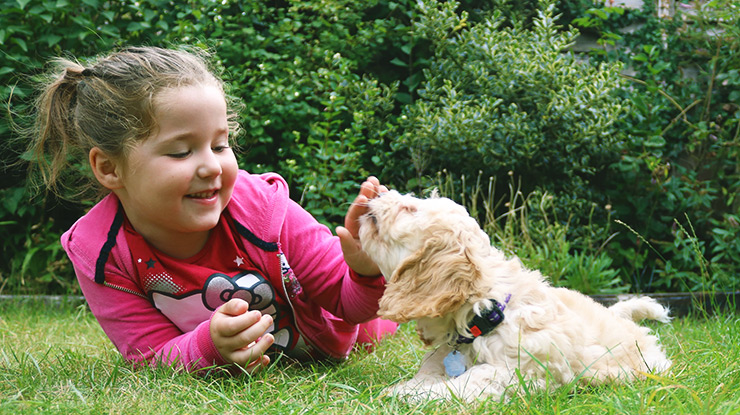
Bite Inhibition: Why It’s Important and How You Can Teach it to Your Puppy
Like most babies, puppies will mouth almost everything as they explore the world. They chew. They bite. They play-fight. And, ideally, they learn to control their muscles, their impulses, and their appetite for your shoes as they socialize with others.
Dogs use their mouths for play, food, and defense. Biting is part of dog communication. Defensive biting—which most dogs reserve as a last resort—communicates discomfort, displeasure, and distress. And in extreme situations, dogs become physically tense: yawning, licking lips, pinning ears back, freezing, baring teeth, and growling. If the distress continues, most dogs will bite the air, and if a dog is provoked further, the next bite may land on flesh.
Mouthing Off
Socialization and bite inhibition are related development milestones. Some breeds are born with “soft mouths” and naturally use little force when biting.
But, most dogs need bite inhibition nurtured and reinforced to get it right. In the first few weeks of development, puppies learn bite inhibition from their mother and littermates. If a puppy bites his mother too hard, the milk walks away. If a puppy bites his littermates too hard, playtime is over.
By four months, puppies should be using soft mouths during dog-dog interactions. So, the more socialization a puppy experiences with other well-socialized dogs, the better developed his intraspecific bite inhibition will be.
Between three and five months, puppies should develop good interspecific bite inhibition, especially dog-human interaction. People are not chew toys. Puppies love to play, which makes training bite inhibition toward humans that much easier.
Mouthing is fine, as long as the puppy doesn’t apply enough force to cause pain, indentation, or break the skin. But, during rough play a toy should occupy the puppy’s mouth (not a hand, arm, or clothing). When play becomes too rough or the puppy accidentally bites a person, play should stop immediately. After a timeout, play can resume, but play should pause every time the puppy bites flesh, with no exceptions.
Reinforcing this rule will set healthy boundaries in the dog-owner relationship and, when practiced with good socialization, will reduce the likelihood of harmful bites. With early, consistent training, the puppy will enter adulthood with the social understanding and muscle memory to control his teeth and jaws even when excited, stressed, in pain, or fearful.
However, it’s important to remember that any dog can bite, especially if provoked. But good bite inhibition, good socialization, and a vigilant owner can prevent most problems.
Sink Your Teeth into Bite Inhibition with Six Simple Steps
Objective: Teach bite inhibition to your puppy to reduce the frequency and force of bites
Prerequisites: Come, sit, lie down
Time: Incorporate into daily play sessions
Level: Easy
Importance: High
__________________________________
- Respond. Begin normal play. When the puppy bites too hard, say, “Ouch!” in a raised voice that will startle the puppy.
- Remove. Pause all play and leave the area for one minute.
- Return. After a minute passes, return to the play area.
- Require. Cue the puppy to come, sit, and lie down as proof that he’s ready to continue proper play.
- Resume. Restart play with the “gentle” cue.
- Repeat. Follow this training sequence consistently each time the puppy bites too hard. After several days, increase timeouts between play to five minutes. The puppy will understand that a soft mouth is the secret to longer playtime. His training will reduce the chances of harmful bites as he develops into an adult.
Does your dog have strong bite inhibition? Are you going to use these tips to train him? Let us know in the comments.












